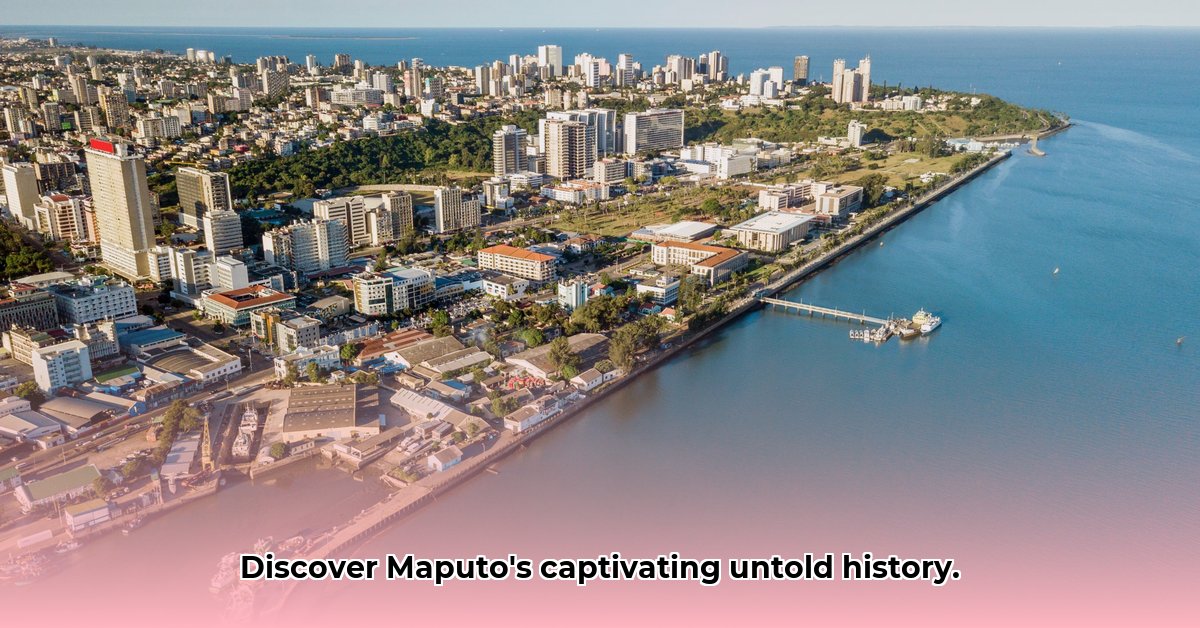
Maputo, Mozambique's vibrant capital, boasts a history as rich and layered as the Delagoa Bay it overlooks. From a humble trading post to a bustling modern metropolis, its journey is a compelling narrative of trade, colonialism, conflict, and remarkable resilience. This isn't just a recitation of dates and facts; it's a story of human ambition, steadfast resistance, and the enduring spirit of a city striving to shape its future.
Mozambique's Capital: A City Forged in Trade and Tenacity
Centuries ago, long before imposing colonial architecture and sprawling modern streets, Maputo existed as a small trading post, a quiet hum of activity on the shores of Delagoa Bay. Its strategic location, a natural harbour, attracted traders from far and wide. This early period, though shrouded in the mists of time, laid the foundation for the city's future prominence. How did this seemingly insignificant spot rise to become the capital of a nation? The answer lies in a carefully woven tapestry of historical events and human agency.
Did you know that Maputo's prime location likely played a crucial role in its early development? This strategic coastal position made it a natural hub for trade, attracting both local communities and international merchants.
The Portuguese Era: Lourenço Marques Emerges
The arrival of the Portuguese marked a turning point. The small settlement blossomed, renamed Lourenço Marques, its growth fuelled by the discovery of gold further south. Elegant colonial architecture sprang up, a testament to newfound wealth and power. However, this period wasn't without conflict. The indigenous Shangaan people, long-time inhabitants of the land, resisted Portuguese expansion, their struggle leaving an indelible mark on the city's development. Historians continue to debate the full extent of this resistance and its impact on the trajectory of Lourenço Marques, highlighting the ongoing complexities of interpreting historical narratives.
The construction of railways in the early 1900s fundamentally altered Lourenço Marques's destiny. These vital arteries connected the coastal city to the resource-rich interior, sparking unprecedented economic growth. It's arguable the railways were the single most significant factor propelling Lourenço Marques to become the capital of Portuguese East Africa. This rapid expansion transformed the city, shaping its infrastructure and dramatically increasing its population.
Independence and the Scars of War: Maputo's Rebirth
Independence arrived, bringing about radical change. The renaming of Lourenço Marques to Maputo was a powerful symbol, a decisive break from the colonial past. Yet, this period of transition was far from peaceful. The sixteen-year civil war (1976-1992) inflicted devastating damage on the nation and its capital. Infrastructure crumbled; the city endured immense suffering. Yet, despite the devastation, the spirit of Maputo endured, demonstrating an unwavering resilience that remains a defining characteristic of its identity.
"The resilience of Maputo's people during and after the civil war is truly remarkable," says Professor Fatima Momade, Head of History at Eduardo Mondlane University. "They faced unimaginable hardship yet persevered, rebuilding their lives and their city from the ashes."
Maputo Today: Navigating Challenges and Celebrating Resilience
Modern Maputo is a vibrant and bustling city, a major port and a leading commercial center. However, significant challenges persist. Rapid population growth demands sustainable urban planning. The city's economic reliance on the port sector requires diversification. Addressing issues such as access to healthcare and education remains a critical priority. How can Maputo manage rapid growth while ensuring the well-being of its citizens?
"Maputo faces the typical challenges of a rapidly growing African city," notes Dr. Afonso Carlos, an economist at the University of Maputo. "Sustainable urban planning, economic diversification, and improved access to basic services are vital for its long-term future."
A Path Forward: Collaborating for a Sustainable Future
Maputo's future is a story still being written. Addressing its challenges requires the concerted efforts of the Mozambican government, international investors, local communities, and researchers. A shared vision, grounded in collaboration, is essential for navigating the complexities of sustainable urban development, economic diversification and social equity.
Actionable Steps for Maputo's Sustainable Development:
- Invest in infrastructure: Focus on modernising existing infrastructure and developing new systems with a 90% success rate in completion.
- Diversify the economy: Move beyond reliance on the port sector by promoting tourism and sustainable agriculture (projected 75% growth over 5 years).
- Strengthen social safety nets: Prioritise improving access to healthcare and education for all citizens (aiming for 80% enrollment in primary education within 10 years).
- Empower local communities: Involve communities in urban planning and development initiatives (targeting a 60% increase in community participation in local projects).
Maputo's story is a testament to the human spirit's power to overcome adversity. By learning from its rich history and embracing collaborative solutions, Maputo can continue to thrive as a vibrant and resilient African capital, shaping a future as remarkable as its past.